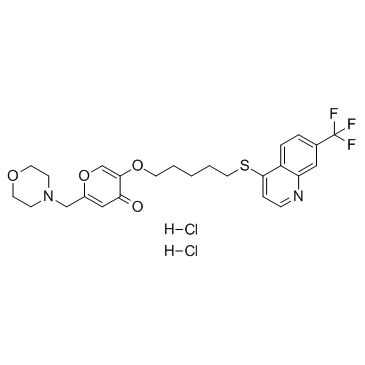An integrated imaging approach to the study of oxidative stress generation by mitochondrial dysfunction in living cells.
Wan-Yun Cheng, Haiyan Tong, Evan W Miller, Christopher J Chang, James Remington, Robert M Zucker, Philip A Bromberg, James M Samet, Thomas P J Hofer
Index: Environ. Health Perspect. 118 , 902-8, (2010)
Full Text: HTML
Abstract
The mechanisms of action of many environmental agents commonly involve oxidative stress resulting from mitochondrial dysfunction. Zinc is a common environmental metallic contaminant that has been implicated in a variety of oxidant-dependent toxicological responses. Unlike ions of other transition metals such as iron, copper, and vanadium, Zn(2+) does not generate reactive oxygen species (ROS) through redox cycling.To characterize the role of oxidative stress in zinc-induced toxicity.We used an integrated imaging approach that employs the hydrogen peroxide (H2O2)-specific fluorophore Peroxy Green 1 (PG1), the mitochondrial potential sensor 5,5 ,6,6 -tetrachloro-1,1 ,3,3 -tetraethylbenzimidazolylcarbocyanine iodide (JC-1), and the mitochondria-targeted form of the redox-sensitive genetically encoded fluorophore MTroGFP1 in living cells.Zinc treatment in the presence of the Zn(2+) ionophore pyrithione of A431 skin carcinoma cells preloaded with the H(2)O(2)-specific indicator PG1 resulted in a significant increase in H(2)O(2) production that could be significantly inhibited with the mitochondrial inhibitor carbonyl cyanide 3-chlorophenylhydrazone. Mitochondria were further implicated as the source of zinc-induced H(2)O(2) formation by the observation that exposure to zinc caused a loss of mitochondrial membrane potential. Using MTroGFP1, we showed that zinc exposure of A431 cells induces a rapid loss of reducing redox potential in mitochondria. We also demonstrated that zinc exposure results in rapid swelling of mitochondria isolated from mouse hearts.Taken together, these findings show a disruption of mitochondrial integrity, H(2)O(2) formation, and a shift toward positive redox potential in cells exposed to zinc. These data demonstrate the utility of real-time, live-cell imaging to study the role of oxidative stress in toxicological responses.
Related Compounds
| Structure | Name/CAS No. | Molecular Formula | Articles |
|---|---|---|---|
 |
EHT 1864
CAS:754240-09-0 |
C25H29Cl2F3N2O4S |
|
Gq-mediated Akt translocation to the membrane: a novel PIP3-...
2015-01-01 [Blood 125(1) , 175-84, (2015)] |
|
Instructive roles for cytokine-receptor binding parameters i...
2015-11-10 [Sci. Signal. 8 , ra114, (2015)] |
|
Ras-related C3 Botulinum Toxin Substrate (Rac) and Src Famil...
2016-03-25 [J. Biol. Chem. 291 , 6912-22, (2016)] |